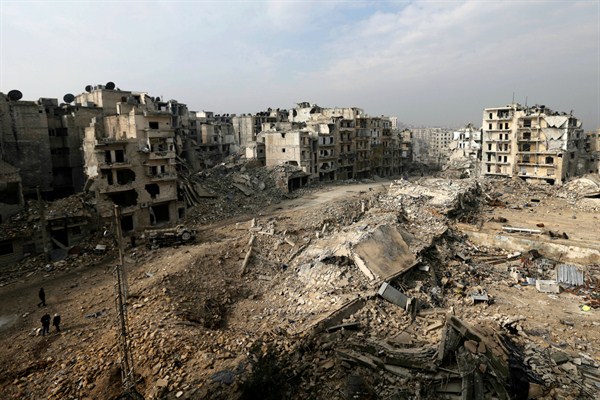The former U.S. ambassador to the United Nations, Samantha Power, called them “starve, surrender and slaughter” tactics. Former Secretary-General Ban Ki-moon called them a “war crime.” Sieges have been especially brutal on civilians in Syria’s civil war, yet they remain the Syrian government’s favorite strategy for retaking territory and purging key regions of the country of its opponents.
In May, the United Nations undersecretary-general for humanitarian affairs, Stephen O’Brien, accused Bashar al-Assad’s government of exploiting civilian suffering as a “tactic of war.” The regime’s bloody, four-year campaign to recapture the battered city of Aleppo, which ended in a four-month siege late last year, claimed the lives of over 30,000 people and forcibly displaced nearly 35,000.
Despite widespread international criticism, Assad is undeterred. Siege warfare has enabled his forces and allied militias to purge the opposition and its supporters from strategic areas in western Syria and consolidate power in the areas surrounding Damascus. But there is a growing opportunity for the international community to push for a diplomatic solution to end the sieges if it can capitalize on recent developments toward an agreed-upon cease-fire from another round of peace talks in Astana, Kazakhstan.

